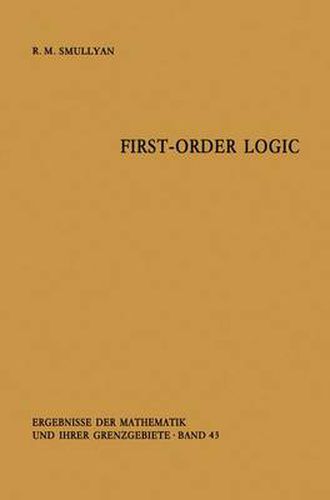Readings Newsletter
Become a Readings Member to make your shopping experience even easier.
Sign in or sign up for free!
You’re not far away from qualifying for FREE standard shipping within Australia
You’ve qualified for FREE standard shipping within Australia
The cart is loading…






This title is printed to order. This book may have been self-published. If so, we cannot guarantee the quality of the content. In the main most books will have gone through the editing process however some may not. We therefore suggest that you be aware of this before ordering this book. If in doubt check either the author or publisher’s details as we are unable to accept any returns unless they are faulty. Please contact us if you have any questions.
Except for this preface, this study is completely self-contained. It is intended to serve both as an introduction to Quantification Theory and as an exposition of new results and techniques in analytic or cut-free methods. We use the term analytic to apply to any proof procedure which obeys the subformula principle (we think of such a procedure as analysing the formula into its successive components). Gentzen cut-free systems are perhaps the best known example of ana lytic proof procedures. Natural deduction systems, though not usually analytic, can be made so (as we demonstrated in [3]). In this study, we emphasize the tableau point of view, since we are struck by its simplicity and mathematical elegance. Chapter I is completely introductory. We begin with preliminary material on trees (necessary for the tableau method), and then treat the basic syntactic and semantic fundamentals of propositional logic. We use the term Boolean valuation to mean any assignment of truth values to all formulas which satisfies the usual truth-table conditions for the logical connectives. Given an assignment of truth-values to all propositional variables, the truth-values of all other formulas under this assignment is usually defined by an inductive procedure. We indicate in Chapter I how this inductive definition can be made explicit-to this end we find useful the notion of a formation tree (which we discuss earlier).
$9.00 standard shipping within Australia
FREE standard shipping within Australia for orders over $100.00
Express & International shipping calculated at checkout
This title is printed to order. This book may have been self-published. If so, we cannot guarantee the quality of the content. In the main most books will have gone through the editing process however some may not. We therefore suggest that you be aware of this before ordering this book. If in doubt check either the author or publisher’s details as we are unable to accept any returns unless they are faulty. Please contact us if you have any questions.
Except for this preface, this study is completely self-contained. It is intended to serve both as an introduction to Quantification Theory and as an exposition of new results and techniques in analytic or cut-free methods. We use the term analytic to apply to any proof procedure which obeys the subformula principle (we think of such a procedure as analysing the formula into its successive components). Gentzen cut-free systems are perhaps the best known example of ana lytic proof procedures. Natural deduction systems, though not usually analytic, can be made so (as we demonstrated in [3]). In this study, we emphasize the tableau point of view, since we are struck by its simplicity and mathematical elegance. Chapter I is completely introductory. We begin with preliminary material on trees (necessary for the tableau method), and then treat the basic syntactic and semantic fundamentals of propositional logic. We use the term Boolean valuation to mean any assignment of truth values to all formulas which satisfies the usual truth-table conditions for the logical connectives. Given an assignment of truth-values to all propositional variables, the truth-values of all other formulas under this assignment is usually defined by an inductive procedure. We indicate in Chapter I how this inductive definition can be made explicit-to this end we find useful the notion of a formation tree (which we discuss earlier).